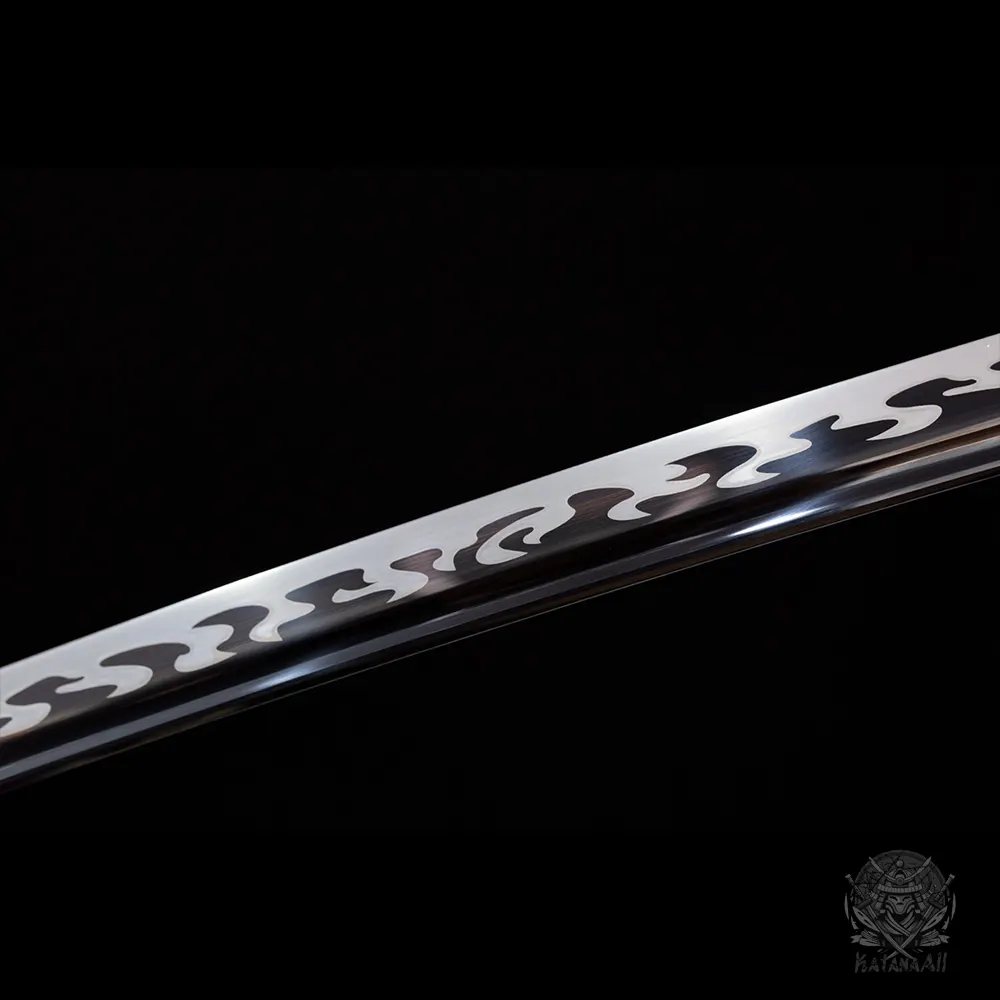
The katana, one of Japan’s most iconic symbols, is more than just a weapon—it is a piece of art and engineering. Among its many striking features, the hamon line stands out as a visual hallmark of the blade. This intricate pattern, running along the edge of the sword, is not merely decorative. It is a testament to the craftsmanship, technique, and functionality of a katana. In this article, we delve deep into the fascinating world of hamon line artistry, exploring its creation, significance, and the stories it tells.
What Is the Hamon Line?
The hamon (刃文) is the visible pattern on the blade of a katana that results from the differential hardening process during forging. It marks the boundary between the hardened edge (martensite) and the softer spine (pearlite). This unique feature not only enhances the katana’s cutting ability but also prevents it from shattering during combat.
Each hamon pattern is as unique as a fingerprint, serving as a signature of the swordsmith’s skill and artistic vision. Popular styles include:
- Suguha (Straight Line): A simple, elegant straight hamon, representing traditional aesthetics.
- Midare (Irregular): A wavy, unpredictable pattern that adds a dramatic flair.
- Choji (Clove-Shaped): Resembling clove blossoms, this intricate style is highly prized.
- Hitatsura (Full Tempered): A flamboyant design with hamon patterns extending across the blade.
The Creation of Hamon: A Dance of Fire and Clay
The hamon line is born during the differential tempering process, a meticulous technique that requires both skill and intuition. Here’s how it happens:
- Application of Clay Mixture:
The blade is coated with a mixture of clay, charcoal, and water. The thickness and pattern of this clay layer dictate the eventual hamon design.- The edge (meant to be harder) receives a thinner layer.
- The spine (meant to remain flexible) gets a thicker coat.
- Heating the Blade:
The swordsmith heats the blade in a forge until it reaches the critical temperature—hot enough to transform the steel’s structure but not so hot as to damage it. - Quenching:
The blade is plunged into water or oil, causing rapid cooling. The thinner clay on the edge allows it to harden quickly, while the thicker clay on the spine slows cooling, leaving it softer and more resilient.
The interaction of heat, steel, and clay creates the distinct visual effect of the hamon. A skilled swordsmith carefully controls this process to ensure both beauty and functionality.
The Symbolism of the Hamon
In traditional Japanese culture, the hamon is more than a technical feature—it carries deep symbolic meaning:
- A Mark of Excellence: The complexity and precision of a hamon demonstrate the swordsmith’s expertise.
- Protection and Strength: The hardened edge ensures sharpness, while the softer spine prevents breakage, reflecting the balance between offense and defense.
- Spiritual Connection: Some samurai believed the hamon imbued their blades with protective or even mystical powers.
Hamon in Modern Times
Today, the hamon remains a subject of fascination for collectors, martial artists, and artisans. While modern technologies can mimic hamon patterns, they lack the authenticity and craftsmanship of traditional methods. For many, owning a katana with a genuine hamon line is akin to holding a piece of history.
Additionally, the hamon has inspired various art forms, from jewelry to graphic design, symbolizing resilience and precision in modern contexts.
Preserving and Appreciating the Hamon
To maintain a katana’s hamon line, proper care is essential:
- Avoid Abrasive Cleaning: Harsh polishing can damage or obscure the hamon. Use traditional sword-cleaning kits.
- Protect from Rust: Regularly oil the blade to prevent corrosion, which can erode the hamon.
- Professional Polishing: If the blade becomes dull or the hamon fades, seek a skilled togishi (polisher) to restore its luster.
Preservation ensures that the artistry and history embedded in the hamon endure for future generations.
The Legacy of Hamon Artistry
The hamon line is a testament to the timeless blend of artistry and utility in katana-making. It speaks of an era when the sword was more than a weapon—it was an extension of the samurai’s soul, a reflection of the swordsmith’s genius, and a symbol of Japan’s cultural heritage.
Whether you are a collector, historian, or martial artist, understanding the hamon offers a deeper appreciation for the katana’s unparalleled beauty and significance.
Explore the world of authentic katanas and discover the stories etched into their hamon. Embrace the artistry, precision, and history that make these blades truly legendary.
